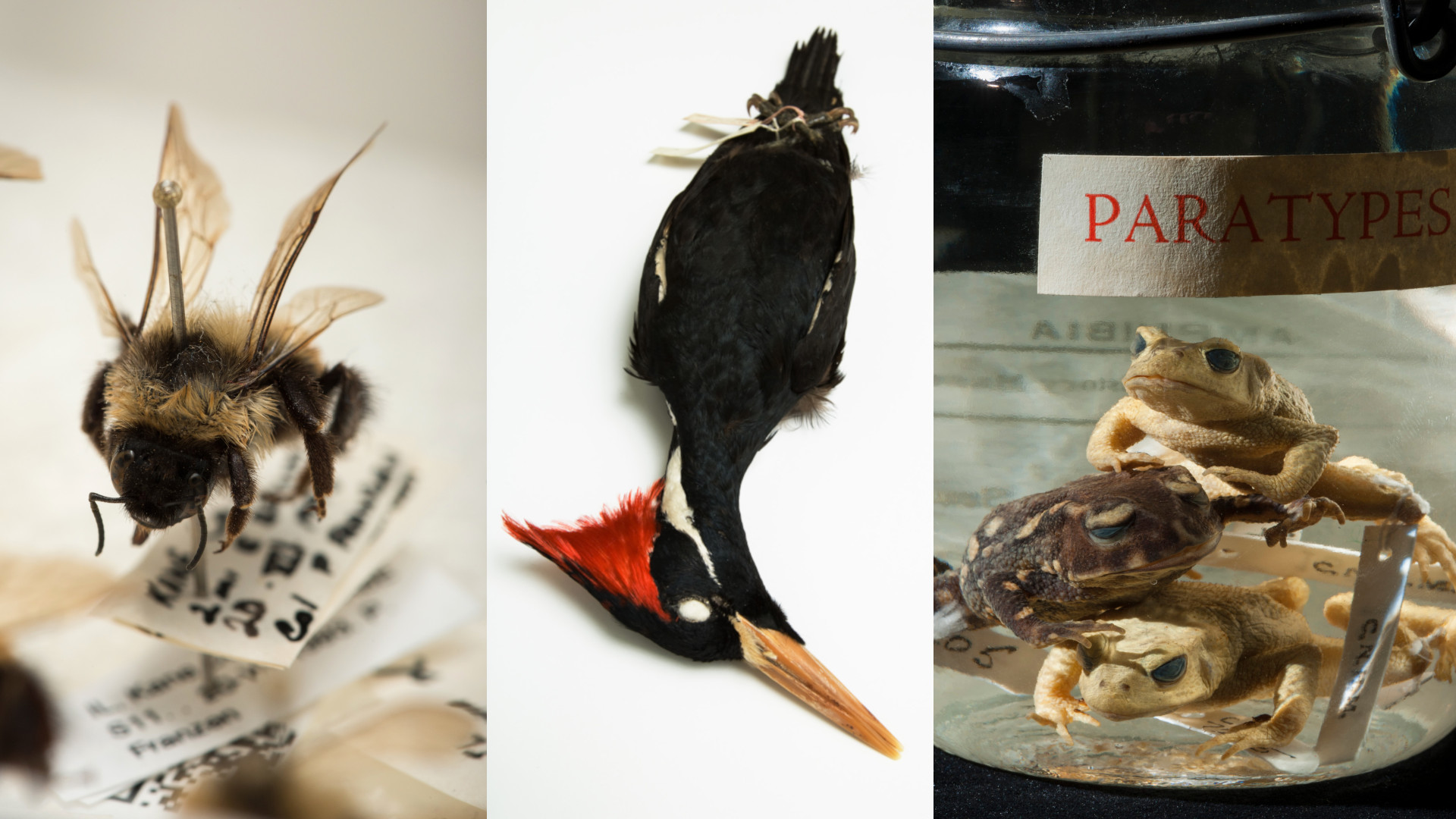Photographer Marc Schlossman documents what we’ve lost — and what we’re in danger of losing.
For more than a decade he’s been creating a powerful series of images of endangered and extinct species from the collection of Chicago’s Field Museum of Natural History. So far his Extinction photo project has documented more than 130 different plants and animals from around the world. The images include a drawer full of extinct passenger pigeons, a close-up of the claws of a Komodo dragon, the furry tail of a red panda, a sample of a moss species that hasn’t been seen in the wild since 1860, a curled-up pangolin, and an entire collection of shells from extinct Hawaiian tree snails.
The photos offer a more intimate experience than visitors to the museum could expect to have on their own, even if these specimens were on exhibit.
“I was able to get as close as I wanted to see these species, these animals and these plants,” Schlossman says. “I’m really, really fortunate. I got to just sit there and kind of live with them and let their visual sequences reveal themselves to me.”
The project may seem macabre, but it’s also filled with hope.
“There’s a lot of really interesting stories about conservation successes in there,” Schlossman says. Take the Coontie hairstreak butterfly, for example. Once believed extinct, this Florida species was rediscovered in 1979 and is now considered to be thriving. Schlossman’s photograph captures the butterfly’s luminescent green-and-blue wings, a rare example of an animal keeping much of its natural coloration after death.
All of this came about because Schlossman, a 58-year-old Chicago-area native who now lives in London, had unique access to the Field Museum’s curators. He worked at the museum as a volunteer for several summers as a young man, while he was earning his bachelor’s in biology. “If you volunteered at the Field, you’re family forever,” he says.
That history later gave him the opportunity to take his twin sons on a behind-the-scenes tour of the museum about 12 years ago, which was when one of the curators put a preserved specimen of an extinct ivory-billed woodpecker in his hands.
The moment stunned him. “It’s this big bird, and I’m going, man, this is the only place you can see this anymore,” he recalls. “I just thought, wow, what if I could do something with this?”
That’s when the photography project began. Field Museum curator John Bates provided access to the museum’s collection of extinct and endangered birds. Schlossman returned to Chicago for a few weeks every year to photograph more species, and the project expanded as he met other curators who invited him to explore their collections of amphibians, fish, insects, plants and invertebrates.
The curators also gave him access the species’ fascinating stories, which writer Lauren Heinz recounts on the project’s website. Each species has its own page on the site, where viewers can zoom into the see every detail of the photo and read about the plant or animal’s conservation status and the causes of its decline.
The museum staff also gave him something else: their determination not to give up.
“While I was working at the museum, the curators weren’t waving around any signs of doom and gloom,” Schlossman recalls. “They were saying, ‘Well, we’ve done a lot of damage, but if we work hard starting right now, there’s still time.’ ”
Schlossman says that attitude informed the project. “It’s not just about extinction,” he says. “I’m trying to show you enough handpicked kinds of animals and plants with really interesting stories, hopefully stories that will make you think, ‘Oh, is that how an invasive species process works?’ or ‘You mean a hurricane could wipe out all the rest of that species?’ That’s really what this whole thing’s about.”
To see more of Marc Schlossman’s photos, visit the Extinction.Photo website or Instagram account. He also contributes to the Everyday Extinction Instagram feed, along with dozens of other conservation photographers.
![]()


